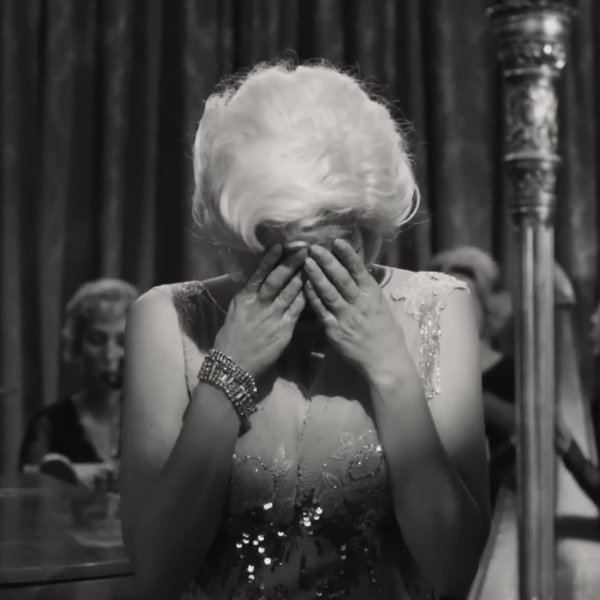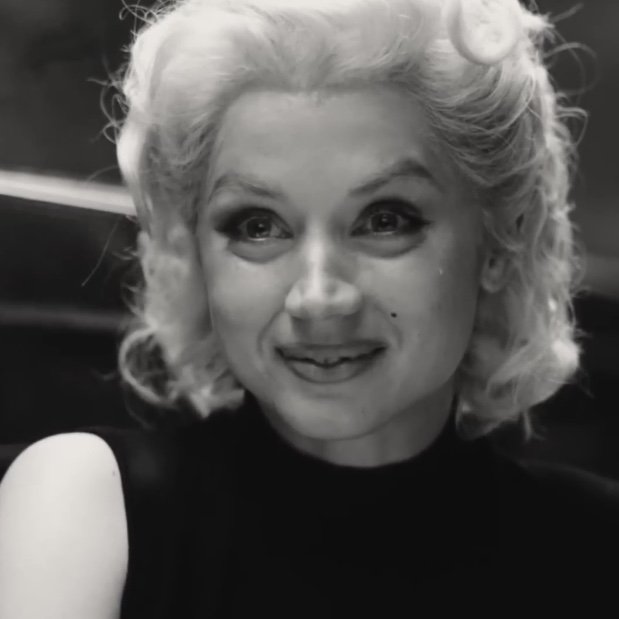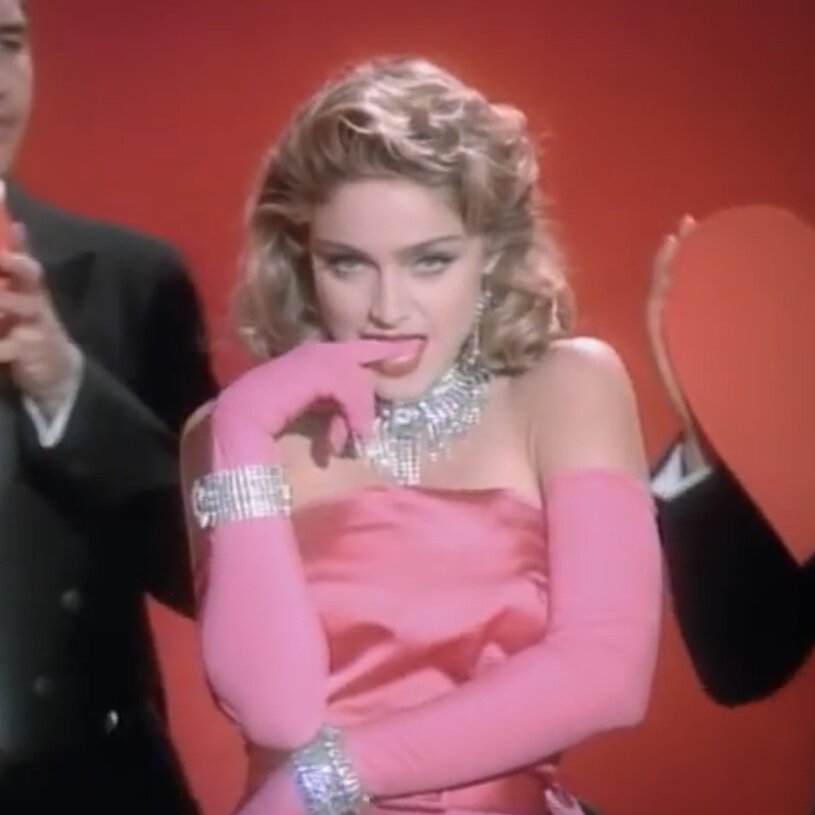Platinum Portrayal: Ana de Armas’ Golden Performance in Blonde
Disclaimer: Please note that this article about the film, Blonde, features content related to mental and emotional trauma, and other similar themes, that may be triggering for some. Reader discretion is advised.
While many reviews of Andrew Dominik’s Blonde, the 2022 film based on Joyce Carol Oates’ historical fiction novel of the same name, were rather scathing, it’s Ana de Armas’ portrayals of Norma Jeane Mortenson and Marilyn Monroe that serve as the main reason to muster up the courage to try and commit to watching the often disturbing and disjointed three-hour film.
Oddly enough, through no fault of her own, it’s de Armas’ performance that’s representative of how disjointed the film really is: simply put, she’s far better than the material that surrounds her. Here are at least five scenes from Blonde where de Armas goes from good to great, displaying a wholehearted commitment to portraying a fictional incarnation of a famous figure, as well as the daunting, almost insurmountable, challenge of playing the most famous female icon in Hollywood history.
5. Calling the Shots: After talking to her agent by phone about the glaring salary inequity between her and a much-higher-paid Jane Russell for 1953’s Gentlemen Prefer Blondes, Norma Jeane calmly questions: “And I’m playing the blonde, in Gentlemen Prefer Blondes? That’s an insult.” She remains polite, even announcing: “I’m gonna hang up now,” but a second later her agent calls her Marilyn, to which Norma Jeane angrily replies: “F*** Marilyn, she’s not here!” and slams down the receiver. de Armas gives Norma Jeane a look of stunned disbelief at what has transpired, but soon proudly smiles at her newfound confidence.
4. Pink Diamonds: de Armas is Monroe’s Lorelei Lee doppelgänger in Blonde’s recreation of the classic “Diamonds are a Girl’s Best Friend” musical number from Gentlemen Prefer Blondes. With only two days to learn the choreography, de Armas captured Monroe’s hand gestures, shoulder shrugs and slinky movements on the narrow staircase. de Armas did 21 takes, with Dominik using the 21st in the final film.
3. Audition Ambition: In the scene where a nervous Norma Jeane auditions for the role of Nell for 1952’s Don’t Bother to Knock, it’s her opportunity to show the (uninterested) male powers that be how connected she is to the character, to the material and to what it represents. Norma Jeane delivers a solid audition (complete with de Armas dropping a single tear down her left cheek), but still asks to do the reading again. de Armas conveys Norma Jeane’s longing for connection, to be heard, not just seen.
2. A Method to the Sadness: At an acting workshop, an in-depth, Method-style exercise eventually sends Norma Jeane down to the floor in hysterics. As a disheveled Norma Jeane tries to regain her composure, as if she’s been jolted awake from a nightmare, the teacher asks: “What were you thinking of?” To which she replies: “I wasn’t thinking.” She quickly tries to gather her thoughts: “Um, maybe… I was remembering?” This is one of de Armas’ strongest scenes, for its display of raw emotion offset soon thereafter by a subtle, shy smile and a loud sniffle during Norma Jeane’s responses, showing just how committed Norma Jeane was to exploring her acting craft, even after an intense reaction.
1. Mother and Child Reunion: Early in the film, a seven-year-old Norma Jeane is living in Los Angeles with her mentally and emotionally unstable mother, Gladys. After surviving in a volatile, violent environment, Norma Jeane is placed in an orphanage, while her mother is eventually institutionalized. One of de Armas’ most gut-wrenching scenes occurs when Norma Jeane sees her mother for the first time in well over 10 years. de Armas’ reaction is visceral, capturing the sadness of separation, followed by her scanning her mother’s face in confusion. Despite their deeply dysfunctional history, it’s simply a child wanting her mother.
In an interview with the SAG-AFTRA Foundation, de Armas’ theorized as to the nature of this complicated relationship: “She really wants to fix Mother. The absent father figure is a problem, but I feel like Mother is the real problem, and what she feels like she has to fix… She thought, if I can find my dad and he comes back, then my mom is gonna be okay, but because I can’t find him, if I’m very, very famous, he can find me. But really it was the mother, you can see that she is trying to fix that, to build that relationship, and it’s obviously… no reaction there, there’s nothing, there’s no feedback, they don’t recognize each other.”
Honorable Mentions: de Armas has other remarkable moments in the film. For instance: The recreation of “I Wanna Be Loved By You” from 1959’s Some Like It Hot. Norma Jeane is on set in Monroe mode, playfully and seductively lip-syncing to the track, but quickly de Armas’ face switches to reveal a devastatingly deflated Norma Jeane, who stops mid-scene, and puts her head in her hands, only to then erupt ferociously in anger over the alleged demeaning on-set gossip about her. In seconds, de Armas’ range runs the spectrum from physical embodiment to mentally distracted to emotionally enraged.
Also, Norma Jeane’s meeting with “The Playwright,” is a rare occasion that we see her calm and self-assured. She’s clearly smitten with the intellectual across the table, and she beams at the professional and personal possibilities. Their flirtatious exchange of the greeting, “Hey, you” is one of the film’s sweet, all-too-brief moments.
de Armas received several acting-award nominations in early 2023, including an Academy Award nomination for Best Performance by an Actress in a Leading Role. And while she didn’t win any golden statues, her performance is the gleam amid all the gloom.
The Pop Zeal Project (Track 84): Gwen Stefani: “The Real Thing”
When Gwen Stefani of No Doubt ventured out to make her first solo album, 2004’s Love. Angel. Music. Baby., the singer used it as a creative outlet to pursue other forms of music besides the ska/post-punk sound, for which the band was already famous. While on The Harajuku Lovers Tour to support the solo effort, Stefani, during an interaction with the crowd after “Crash,” offered insight as to the intention behind L. A. M. B.:
Stefani’s creative direction for L. A. M. B. pointed towards psychedelic pop-punk.
“I was on tour with No Doubt… and I said to Tony… wouldn’t it be fun to make a dance record? Very, very clean, easy, simple idea… I was never gonna tour the record, but then you guys keep buying the record, you keep bringing me out, you keep tempting me. And I’m on this big ol’ wave and I just wanna crash right down on top of you, and I just wanna hear you guys sing the songs back to me.”
The song in the setlist before “Crash,” entitled “The Real Thing” was cowritten by Stefani, Linda Perry, and Stefani’s then-husband, Gavin Rossdale, and co-produced by Nellee Hooper (No Doubt’s “Hella Good”; “Running”; their cover of Talk Talk’s “It’s My Life”). Lyrically, the love song expresses how much one, after being with another for some time, still wants, and needs, the other around. Presumably, Stefani and Rossdale, each with their own rock-star careers and busy schedules, were writing about each other at the time, with the following lyrics a reflection of their relationship: “And we’re together most days/But I still love to have you around”. However, in 2016, after 14 years of marriage, Stefani and Rossdale divorced, making one of the track’s later verses a bit prophetic: “Heaven knows what will come next/So emotional, you’re so complex/A rollercoaster, built to crash/But I still love to have you around.” (Note another reference to the word, crash.)
Musically, “The Real Thing” was heavily (and intentionally) inspired by New Order’s 1986 track, “Bizarre Love Triangle.” Stefani would have been 17 years old when the synth-pop song was first released, and indicates another musical style that Stefani was interested in besides the ska/post-punk sound that a budding No Doubt was embracing. (One can almost imagine Stefani staying up late on a Sunday night to watch MTV’s “!20 Minutes” to catch the video for “Bizarre,” or sliding a cassette tape into a boombox during lunch at Anaheim’s Loara High School.) Into adulthood, Stefani remained a fan of the English alternative-pop band, and reached out to collaborate with them. After initially declining, the band’s singer, Bernard Sumner ended up contributing backing vocals, while Peter Hook played bass on Stefani’s musical homage.
Listening to “The Real Thing,” one may not necessarily hear the direct influence of “Bizarre.” But in listening to “Bizarre,” and then returning back to “The Real Thing,” the similarities become more evident. For example:
The guitar riff in the outro of “Bizarre”; the intro to “The Real Thing.”
Melody: In “Bizarre” at the lyrics: “There’s no sense in telling me/The wisdom of the fool won’t set you free.” In “The Real Thing” at the aforementioned: “Heaven knows what will come next/So emotional, you’re so complex.”
Gwen Stefani’s “The Real Thing,” and essentially the Love. Angel. Music. Baby. period as a whole, marks one of the most important moments in Stefani’s career: Sonically, it’s a purposeful step from ska to synth pop and other sounds; visually, as seen on The Harajuku Lovers Tour, it’s a shift from rugged rock star to polished platinum-Marilyn pop star, complete with what would become Stefani’s signature: the retro red lip. “The Real Thing” serves as another way Stefani solidified herself as the real deal.
Red Lip Photo by John Shearer.
The Pop Zeal Project (Track 79): Madonna: “Material Girl”
Reference Material
Madonna’s “Material Girl,” from 1984’s Like a Virgin album, is one of the first instances of the singer’s love of playful irony. Vocals that evoke innocence tell the story of a seemingly passive individual who is savvier and more decisive than one would believe. While it appears she is the pursuer of material goods held by “some boys,” by song’s end, she becomes the pursued; there’s a reversal of roles, as heard in the following not-so-veiled verse, full of layered meaning: “Boys may come and boys may go/And that’s all right you see/Experience has made me rich/And now they’re after me.”
Mary Lambert’s video for the song also established just how ironic Madonna felt the song was. Its homage to Howard Hawks’ 1953 Gentlemen Prefer Blondes features Madonna as an actress on a film set, playing the role Marilyn Monroe made famous, a role that had Monroe singing, “Diamonds are a Girl’s Best Friend.” Yet in this interpretation, both Madonna as the actress and—judging by the “Like a Virgin” lace outfit at the end of the video—Madonna herself believe that daisies can also be a girl’s best friend. Madonna dances a fine line: she pays respect to the film reference, while simultaneously offering critical opposition to “Diamonds” antiquated philosophy.












